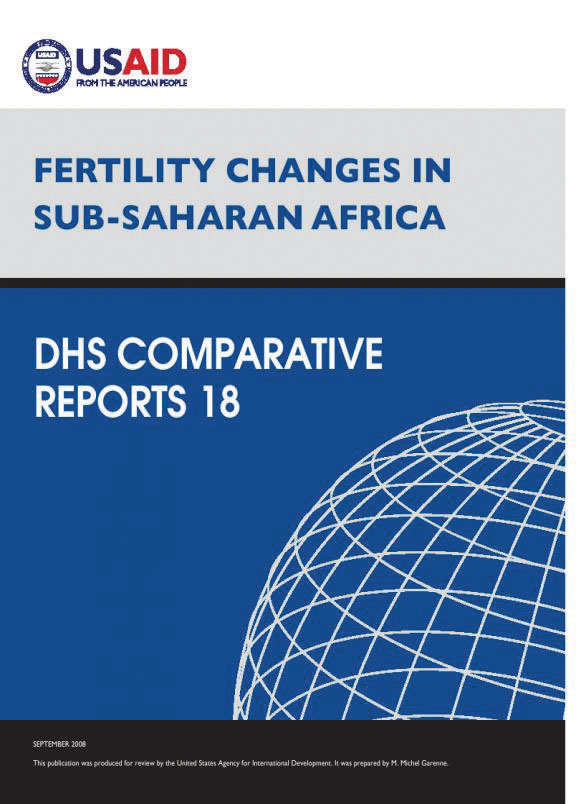- PUBLICATIONS
- JOURNAL ARTICLES
- ACCESS PUBLICATIONS
Publications Summary
- Document Type
- Comparative Reports
- Publication Topic(s)
- Fertility and Fertility Preferences
- Language
- English
- Recommended Citation
- Garenne, Michel. 2008. Fertility Changes in Sub-Saharan Africa. DHS Comparative Reports No. 18. Calverton, Maryland, USA: Macro International
- Download Citation
- RIS format / Text format / Endnote format
- Publication Date
- September 2008
- Publication ID
- CR18
